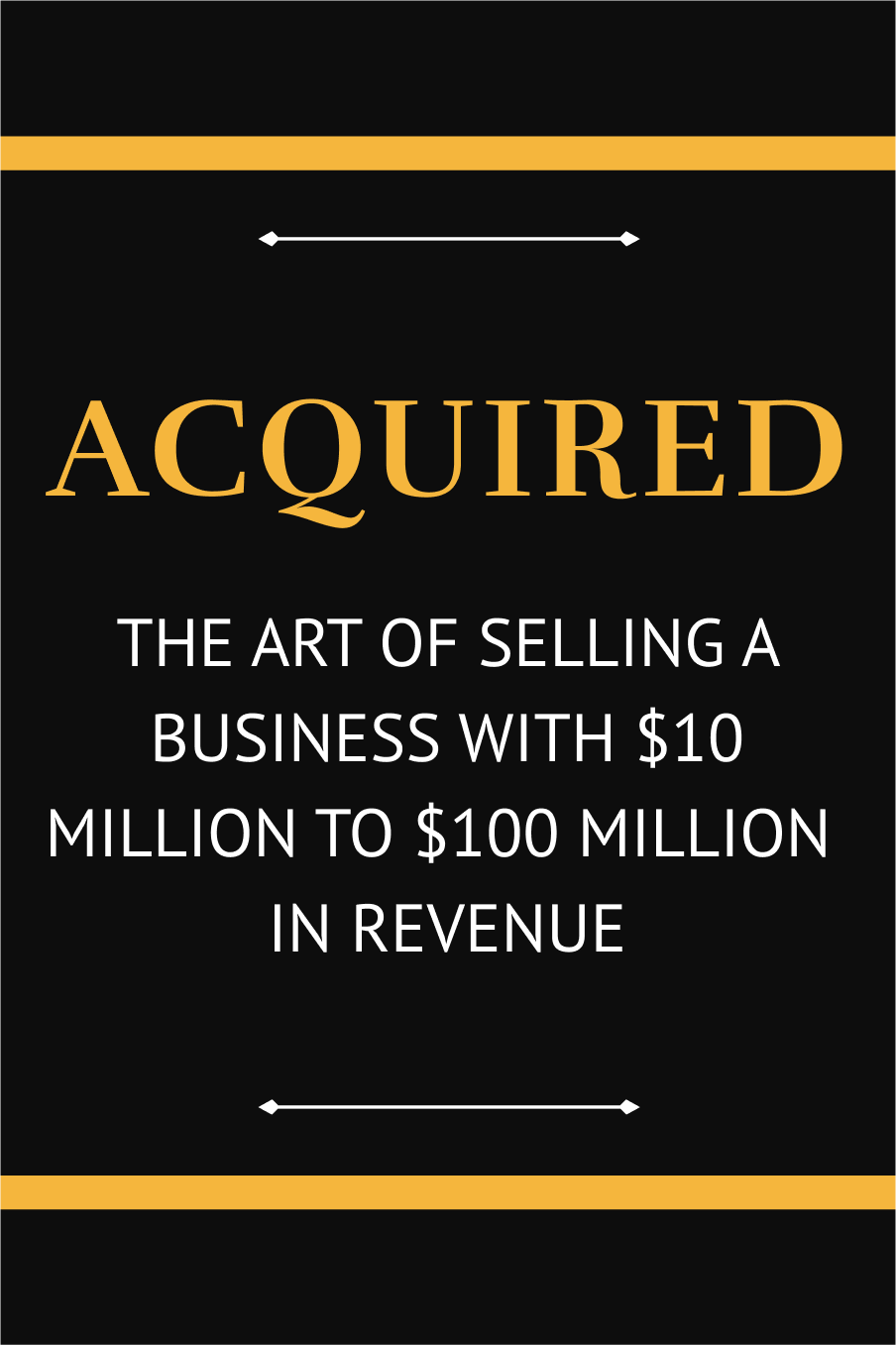Confidential Information Memorandum (CIM) | A Detailed Guide
Executive Summary
A Confidential Information Memorandum (CIM) is a professionally prepared summary of your business that is presented to prescreened buyers who are interested in purchasing your business.
The CIM addresses the buyer’s questions quickly and efficiently, saving countless hours. It includes information regarding company history, products, services, licensing, and competition. It also includes a financial summary, information about operations, lease terms, the value of assets and inventory, an employee summary, and terms of the sale.
The purpose of the CIM is to help the buyer decide if they would like to take the next steps and learn more about the business. The CIM will not address every question the buyer may have about the business. Rather, it allows the buyer to take the next steps in the transaction.
Here are the major topics typically covered in a confidential information memorandum (CIM):
- Assets
- Competition
- Customers
- Deal structure and financing
- Equipment
- Facilities
- Financials
- History
- Improvement potential
- Intellectual property
- Inventory
- Litigation
- Operations
- Pricing
- Product or service
- Staff
Do you need to prepare a CIM when selling your company? If so, how much information should be included in your CIM? When is the CIM released to buyers? How is the CIM different from a Teaser Profile? This article explains.
Advantages of Preparing a Confidential Information Memorandum (CIM)
Saves Time
When selling a business, you will quickly learn that all buyers ask the same questions. This can quickly become tiring if you aren’t prepared. A CIM replaces what might be a one- to two-hour discussion and efficiently answers the questions virtually every buyer will ask about your business.
Without a CIM, you must answer the same 50 to 100 questions from every potential buyer. With a CIM, these questions are efficiently answered, allowing you to focus on running your business.
Many buyers are tire kickers. If you waste your time talking to dozens of uninterested buyers, you may lose patience by the time you have a real buyer on the hook. An efficient process will save you time and grief and ensure you are fresh when you are in front of a serious buyer.
Helps You Prepare
When a business broker or investment banker assists you in preparing the CIM, you have the opportunity to discuss your operations in depth, and it prepares you for the dozens of questions a sophisticated buyer may ask.
An experienced business broker or M&A intermediary will have crafted hundreds of CIMs and will be adept at presenting the business in the best light possible. You will also have the chance to rehearse your answers to such common questions as:
- Why are you selling your business?
- If the business has such incredible potential, then why don’t you keep it?
- Who are your competitors, and how do you stack up against them?
- Why should I buy your business? Why don’t I just start one?
Communicates the Value of Your Business
Often, a buyer may talk to others who assist in making their decision, such as accountants, attorneys, or investors. In the absence of a CIM, the buyer must sell the business to third parties on their own.
With a professionally prepared CIM, the buyer can simply present this document to their advisors and then have an intelligent discussion based on the contents of the document.
Provides You with Perspective
Reviewing your CIM gives you a unique opportunity to view your company from a fresh, realistic perspective as if you were a buyer. Doing so prepares you for negotiations and gives you the opportunity to position your business in the best light possible.
Communicates that You are Serious
Preparing a CIM also communicates to the buyer that you are serious about selling your business, and they are more likely to take you seriously and treat you with respect.
Tips for Preparing a Confidential Information Memorandum (CIM)
Include the Right Amount of Information
The story of your business should be presented in a coherent, professional package. Your CIM should include most of the information a buyer needs to know when deciding if they would like to pursue your business.
However, the CIM does not need to contain everything the buyer needs to know. It should contain enough information for the buyer to decide if they would like to invest time in meeting with you.
Presents the Highlights of Your Business in a Persuasive Format
The CIM should present the key selling points of your business in a persuasive story. It should also position the negative points in the best light possible.
For example, if the owner has not invested heavily in marketing the business in recent years, this presents a tremendous opportunity for the buyer to increase revenues.
View Businesses for Sale
ViewTimeline of Sending Information to the Buyer
Information about your business should be released to the buyer in phases, in a specific order, as the buyer expresses their interest and provides documentation to confirm their financial and operational qualifications to purchase the business.
The Process
Here is an abbreviated description of the process:
- The buyer signs and submits a non-disclosure agreement (NDA).
- After the NDA is approved, the buyer receives additional information on the business.
- The buyer meets the seller and receives more information on the business.
- The buyer submits a letter of intent (LOI) and begins due diligence.
At the beginning of the sales process, the seller is making claims that are not verified until an offer is accepted and the buyer moves into due diligence.
The Documents
The following documents should be released to the buyer only after an LOI is accepted:
- Tax returns
- Bank statements
- Leases — premises leases, equipment leases, etc.
- Information regarding third-party contracts, such as supplier or vendor contracts
- Sales and use tax reports
- Details regarding staffing and payroll-related documents — job descriptions, employment contracts, etc.
- Insurance-related documents — workers’ compensation, health insurance, liability insurance, etc.
- Details of licenses and permits
- Environmental documents and inspections
- Franchise-related documents
How the Numbers Work
Here are how the numbers might work on a typical transaction:
- Interested buyers: 50
- The number of buyers who will sign a non-disclosure agreement and receive your CIM: 20 to 25
- The number of buyers who will respond with questions or interest: 15
- The number of buyer meetings arranged: five to eight
- The number of second meetings arranged with buyers: three to five
- The number of LOIs received from buyers: one to three
As you can see, the sale of a business can be compared to a sales funnel. There are major steps along the way, and buyers drop off at each step.
By examining the major stages of selling a business and preparing for each one, you can dramatically improve the chances of a successful sale. Having a professionally prepared CIM increases the chances of a successful sale and saves you a significant amount of time during the process.
FAQs About Confidential Information Memorandums (CIM)
How is the CIM different from a Teaser Profile?
The Teaser Profile is an abstracted version of the CIM and is often five to 10 pages in length. The Teaser Profile contains the highlights of the business and is sent to prospective buyers on a confidential basis — that is, without divulging the identity of the business.
It is helpful to ascertain whether a buyer is seriously interested before allowing them access to more sensitive information, including your name.
The Teaser Profile does not reveal the name or identity of your business. It can be shared with buyers before they view the CIM if you are not comfortable sharing more detailed information with a potential buyer.
What do I do if the buyer does not respond when I email them the CIM?
Don’t chase them down. Buying and selling a business requires a lot of patience. Buyers need to be proactive if they are serious about buying your company. Not hearing from a buyer happens all the time, and we suggest that you just keep moving forward. Do not chase any buyer.



